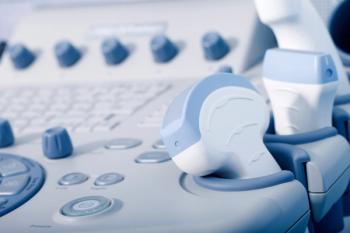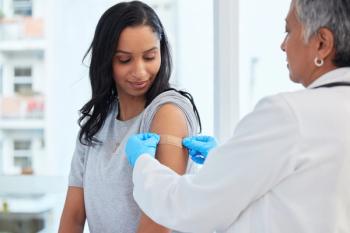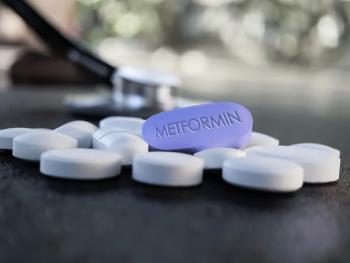
Using certain hair products during pregnancy may negatively impact maternal hormone levels
The use of hair dyes, bleach, relaxers, and mousse was associated with lower levels of sex steroid hormones in pregnant women, according to a new Rutgers study.
The ingredients found in personal care and beauty products often contain a wide range of endocrine-disrupting chemicals like phthalates, parabens, and toxic metals. They interact with hormone systems and influence hormone synthesis, regulation, transport, metabolism, and even hormone reception.
A study in Environmental Research investigated a possible connection between the use of these products and the levels of sex steroid hormones, including estrogen, progesterone, and thyroid hormones, in pregnant women living in Puerto Rico.1
Certain hair products like hair dyes, bleach, relaxers, and mousse were associated with lower concentrations of sex steroid hormones. Altering hormone levels, especially during pregnancy, can have lasting consequences. At birth, this may contribute to fetal growth restriction, preterm birth, and low birth weight. It may also impact infant and child growth and pubertal trajectories, and even influence development of hormone-sensitive cancers like breast and ovarian cancer.2
Using data from Puerto Rico PROTECT, an ongoing prospective birth cohort designed to study environmental exposures among pregnant women and their children, researchers analyzed blood samples from 1,070 pregnant women between age 18 and 40 in Puerto Rico. None of the women had used oral contraceptives in the 3 months prior to pregnancy, nor did they use in vitro fertilization. Researchers also sought to understand if and how demographic factors influenced the use of certain personal products.
Participants underwent physical exams and completed a series of questionnaires about their use of personal care products, which included perfumes and cologne, soap, lotions, cosmetics, nail polish, shampoos, conditioners, shaving creams, and mouthwash.
Researchers measured the levels of 9 hormones in each woman’s blood sample: corticotropin-releasing hormone, sex-hormone binding globulin, estriol, progesterone, testosterone, thyroid-stimulating hormone, total triiodothyronine, total thyroxine, and free thyroxine. Each participant provided blood samples twice throughout their pregnancy—once at the first visit (n = 910)and once at the third visit (n = 633). The mean age of the women providing samples was 28 years and 80% never smoked.
All sex steroid hormone levels were lower in women who used certain hair products than those who did not: SHBG (%Δ = −7.1, 95%CI: −12.4,-1.8), E3 (%Δ = −23.2, 95%CI: −32.2,-13.0), progesterone (%Δ = −21.5, 95%CI: −29.4,-12.9), and testosterone (%Δ = −21.5, 95%CI: −33.1,-7.8).
Income, education, and employment status also influenced the use of personal care products in pregnant women. For example, women who reported a household income greater than $100,000 used personal care products more often than women with lower household incomes. Employed women also reported using more cosmetics than unemployed women.
“This data is important because it will allow us to identify populations who are at an increased risk of chemical exposures associated with personal care product use,” said lead author, Zorimar Rivera-Núñez, an assistant professor at the Rutgers School of Public Health.
Rivera-Núñez recommends that ob-gyns inform and guide their reproductive-age patients about the potential health impacts of endocrine-disrupting chemicals in personal care products.
“We should replicate this study in other populations,” she said. “There is a strong culture of beauty influence among Latina women, but also other populations, including Black women. This will help us to identify populations at risk. Second, refining tools like frequency-of-use questionnaires by including brands and more time points will also be helpful to better assess exposure, and examining multiple personal care products at the same time will help assess the impact of multiple exposures.”
References
- Rivera-Núñez Z, Ashrap P, Barrett ES, et al. Personal care products: Demographic characteristics and maternal hormones in pregnant women from Puerto Rico. Environmental Research. Published online November 2021:112376. doi:10.1016/j.envres.2021.112376
- Hair dye, relaxer use associated with lower sex steroid levels during pregnancy. Healio.com. Published 2022. Accessed January 3, 2022. https://www.healio.com/news/endocrinology/20211228/hair-dye-relaxer-use-associated-with-lower-sex-steroid-levels-during-pregnancy
Newsletter
Get the latest clinical updates, case studies, and expert commentary in obstetric and gynecologic care. Sign up now to stay informed.










